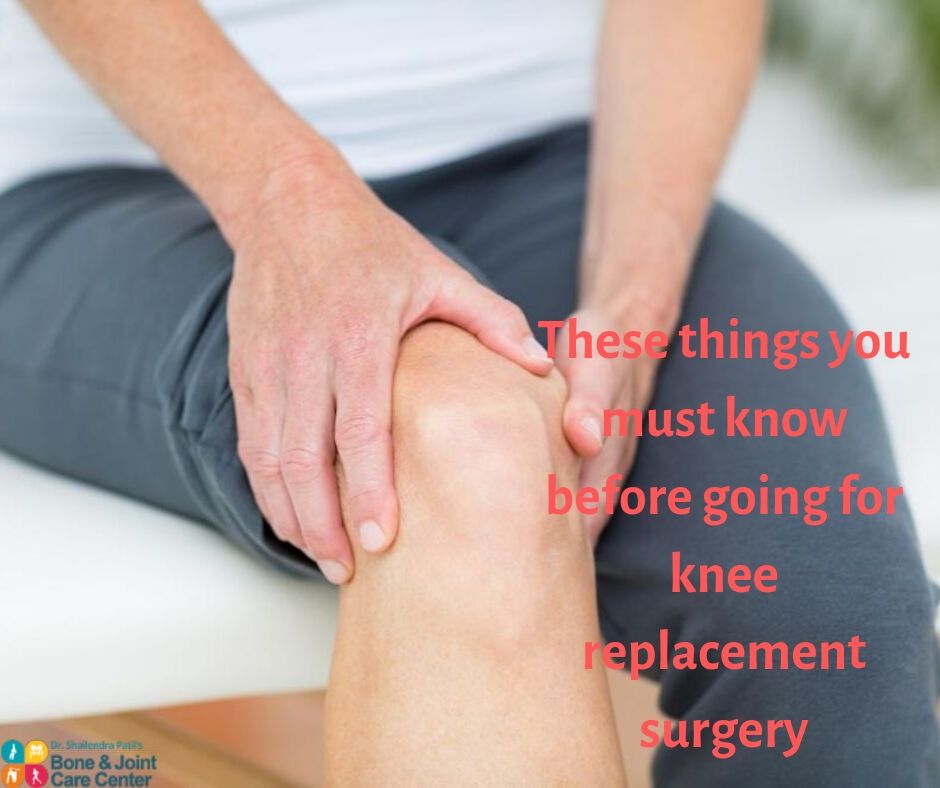
A damaged knee restricts every movement. Even simple things like climbing stairs or getting out of a chair become painful. When the situation goes out of control, there is no other option than going for knee replacement surgery. It is a surgical process to replace the natural knee joint with an artificial one.
Your doctor will decide when all other alternative treatment methods fail.
What triggers the pain in the knee joint? When the cartilage (a soft cushion between the bones of the knee) gets damaged or lost, movement of knee becomes painful.
During the surgery, Knee Specialists in Kalyan replace the damaged bone and cartilage with a smooth natural-identical gliding surface made from plastic and metal.
There is a remarkable improvement in mobility after surgery. And the pain disappears at all.
If you are planning to go for it or being advised by your doc, then read the blog to get the complete information about knee replacement surgery.
What determines your eligibility for the surgery?
An orthopedic surgeon looks at the diagnostic reports for the analysis and guideline for operation and postoperative treatment.
People who have arthritis, especially osteoarthritis, get benefited from the operation. However, it can be an effective treatment in many cases of other arthritis; for example, inflammatory arthritis, rheumatoid arthritis, and traumatic arthritis.
What are the types of replacement?
Based on the condition of the knee, the Knee Surgeon in Kalyan decides whether you need partial replacement or total.
The knee is divided into three parts-
- Medial or inside
- Lateral or outside
- Anterior or kneecap
When only one part of the knee is damaged, then a partial replacement will do. Usually, it happens when the medial portion is damaged.
When the entire knee is damaged, then total replacement is the only choice. Usually, it happens due to arthritis.
How long does it take to replace the knee?
The surgery takes merely an hour to complete, but the prep time and anesthesia procedures are quite long.
Spinal anesthesia is given to numb the legs during the surgery and a few hours after. If the operation has to be performed under the local anesthesia, then it is given in the knee.
There is a new advancement in the surgery, which is called ‘the nerve block’. It extends the pain relief for a few weeks after surgery.
Usually, the nerve block method is used in total knee replacement surgery.
Managing pain after knee replacement surgery
Dr. Shailendra Patil Kalyan performs several surgeries every month. He says that the best method of managing pain is to prevent it from the beginning.
Opioid pain relievers reduce severe post-operative pain. However, people are shifted to non-narcotic pain relief medication as soon as possible.
Is hospitalization necessary?
Typically, total replacement requires two-three days of hospitalization. The partial knee replacement is more likely to be an outpatient surgery.
How many days does it take to recover?
Though several claims are made about the fast recovery of the knee replacement procedure, Dr. Shailendra Patil, a renowned orthopedic surgeon in Kalyan says that it is a year-long process.
- The first phase: It takes six weeks to heal the wound, reduce swelling, and regain movement of the knee joint.
- The second phase: It takes four to six months to gain muscle strength and endurance through physiotherapy and exercise.
- Third phase: It takes another four to six months to gain full strength and mobility in the knee joint.
How to recover fast?
To recover fast after undergoing knee replacement surgery in Kalyan, you must put efforts from the first day after the operation.
Depending on how you feel, you should be able to return to normal activities within six months to nine months. According to experts, the long-term outcome is mostly affected by individual motivation level and ability to strengthen the muscles around the knee.
Physiotherapy plays a vital role in recovering from the surgery.
Do some knee replacement surgeries fail?
Well, like any other surgery, a knee replacement can also fail. The common causes are:
- Infection in the wound
- Loosening or wear-and-tear of the joint
- Instability of the joint
When the joint gives out or locks later, it causes persistent pain and restricted movements. However, no functional studies have happened so far to get the cause-effect analysis.
However, the good news is the percentage of failure is very minimal. In the majority of the cases, patients live a normal life after the surgery.
Most of the patients return to an active lifestyle after six months. They can do whatever they were doing before arthritis got developed in the knees.
It is possible to retain the benefits of knee replacement by following an active lifestyle and keeping the weight under control. The most important thing is to avoid situations that put excessive load on the knees.



